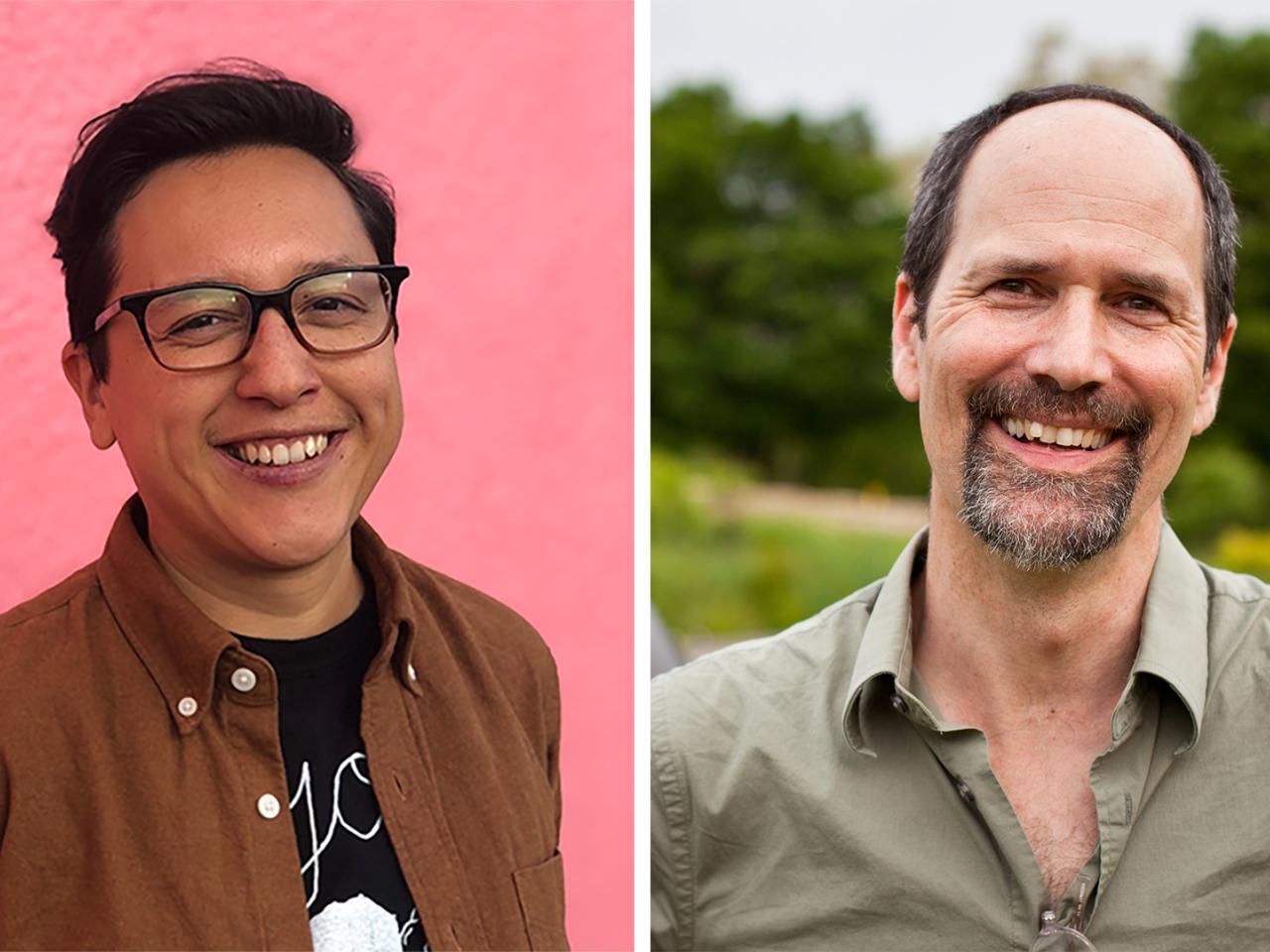Meet New Day: Nat Ruiz Tofano and Todd McGrain

When we were in graduate school, what brought us together was a strong belief that art can touch each of us in a way that ideas and intellect alone cannot. I (Todd) am a sculptor, artist, and filmmaker and have worked for many years creating sculptural monuments to birds that have been victims of human-caused extinction. I (Nat) am an independent documentary film producer and programmer for the documentary field. Our creative work together is housed under our small but mighty organization, Lost Bird, where we combined forces to produce Elephant Path/Niaja Njoku.
The film is an indelible tale of friendship and commitment, set against the luminous beauty of the Central African rainforest. Together, elephant behavioral biologist Andrea Turkalo and indigenous tracker Sessely Bernard are tested by the realities of war and the limits of hope for the majestic animals they have committed their lives to study and protect.
I (Todd) first heard the calls of forest elephants in the offices of the Elephant Listening Project at Cornell University. Sitting beside me was renowned elephant behavioral biologist Andrea Turkalo. Andrea had recently arrived in Ithaca to help her collaborators decode these calls. Andrea’s descriptions of the rainforest, the indigenous people she has worked alongside, and the peril the elephants were facing set a path for me that I would follow for the next four years. In those four years, I would travel with security contractors, go on patrol with eco-guards, and spend extended time in the forest with the Bayaka people who were avoiding the civil conflict unfolding across the country. Sessely Bernard, a Bayaka elder, had worked with Andrea for 23 years. Sessely and his extended family welcomed me in to document this remarkable unfolding story.
There are common elements in every contemporary extinction story: unchecked market forces, corruption, greed, overexploitation, and habitat loss. A more optimistic commonality between these tragic histories is the presence of a dedicated and inspiring group of thoughtful and forward-looking people, sounding the alarm of impending loss. This is what we wanted to showcase in our film. It is our hope that the efforts of these people will be fortified by our film.
One of the important aspects that differentiates Elephant Path/Niaja Njoku from other films focusing on the current extinction crisis is that the unfolding narrative draws a connection between the peril the elephants face and the concomitant risk to the people that live in the region. The film presents the complex interdependent relationships between researchers who are working toward understanding a vanishing species; eco-guards who see themselves as guardians of the elephants; and indigenous people who live in harmonious coexistence with the herd. Each of these groups, as well as the elephants, are threatened by a violent rebel movement driven by profit from the illegal trafficking of poached ivory.
We recently presented the film to a group of anthropologists and anthropology students at Washington State University who raised important questions about conservation efforts in war-torn nations and the responsibilities of international wildlife organizations in improving the wellbeing of the people in the countries in which they work. Also, one unexpected development from our screening at DOC NYC was that the film instigated an important investigation to determine if the Central African rainforest could qualify for United Nations financial support to preserve forests that play a role in mitigating the effects of climate change. This could have dramatic implications for the funding of conservation efforts in the future.